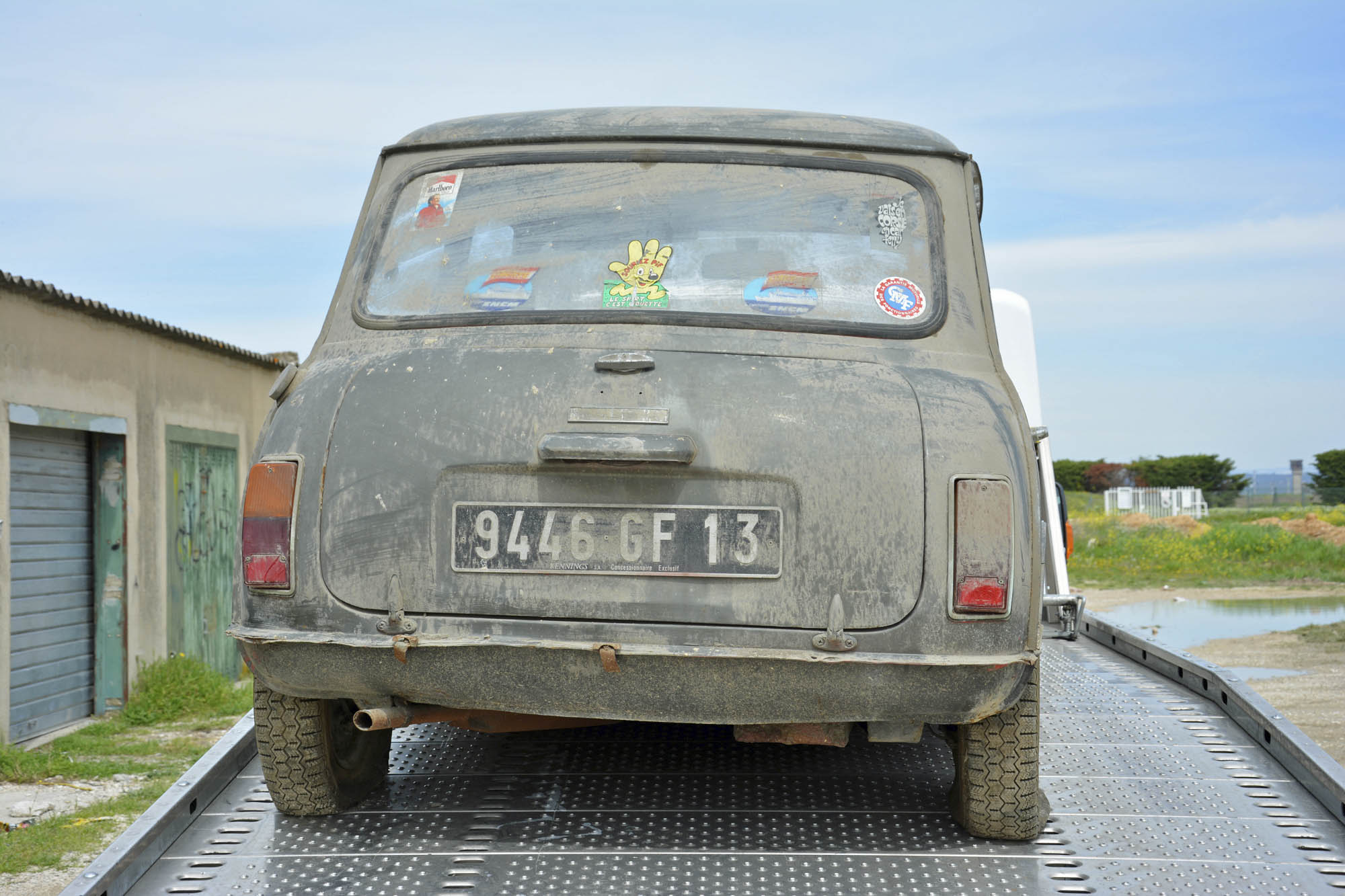When you buy a barn-find ‘72 Mini in a shady Citroën repair shop, anything goes
An online ad for a 425cc flat-twin engine from a late 1950s Citroën 2CV led me 40 minutes away from my home in France to a decidedly shady corner of Marseilles. The photos of the two-cylinder turned out to be the proverbial tip of the iceberg. The grungy former Citroën repair shop, concealed behind a white metal gate that was taller than a city bus, resembled a parts emporium in disarray with a few cars thrown in.
Peering at me with puppy eyes, my future “barn-find” Mini waited patiently in a corner next to the cadaverous shell of a Citroën GS.
“Someone brought it in for repairs decades ago and never came back for it. I looked it up—it’s not stolen or anything,” the seller told me. He quickly clarified that he’s a police officer, so he has access to this type of confidential information. Right.
As we walked around the warehouse, he explained that his uncle hoarded parts while running a Citroën repair shop for decades. He retired in the 1990s but chose to keep the cars, the parts, and the tools. Now in his 90s and in poor health, the uncle resignedly decided the time had come to get rid of it all.


A Mini match made in (Citroën) heaven
I returned to the shop several times to buy tools (and more parts) before agreeing to purchase the Mini. It just wouldn’t leave me alone during each trip. Some automotive archaeology revealed it was a Morris model built in 1972. It wore a local registration number issued in 1975, meaning it wasn’t sold locally, and it was last registered in 1980. It arrived at the shop that same year, although the mechanic couldn’t remember what it needed. The car spent more time off the road than on. The last time it turned a tire, I hadn’t even been born.
Mechanical mummification—in a shrine dedicated to the Citroën gods, hallowed be their names—preserved the Mini remarkably well. It had nasty body damage on the right-side fender and on one panel, but the rest of it was solid. All of the typical Mini rust spots passed the magnet test. It had been repainted dark gray (it was red originally) but was never welded, and it was complete save for the rear bumper. Although the keys were long lost and the car was locked, peeking through the windows revealed an interior in stellar shape.
I’d never owned a Mini, or a British car of any kind for that matter. After agreeing on a price, I rented a flatbed truck to tow it out and haul it to my storage unit. Straightforward, right?


And now for the tricky part
Remember this: The car hadn’t moved in nearly four decades. It had no keys. Loading it onto the flatbed took over two hours, even with a winch and the seller’s generous help. The process required opening and removing one of the rear side windows to unlock the car and disconnecting the steering column where it attaches to the bottom part of the dashboard in order to turn the front wheels.
The seller and I exchanged a few parting words, and he casually requested I call him immediately if I discover a firearm hidden in the car. What? “This neighborhood used to be full of gangsters,” he told me. “It’d just be a small handgun; you’re not going to find an AK-47.”
Unloading the car (on my own, this time) quickly proved as difficult as loading it. It wouldn’t roll down the flatbed. With time running out and plans A through Y exhausted, I turned to the last-resort solution: loop one end of a thick rope I’d brought along around the back of the car, tying the other end to the metal bars that cover my storage unit’s only window, and slowly creeping the truck forward to cajole the Mini off of it, pausing every few feet to tighten the rope and make sure the wheels continued to point in the right direction. Success!


Bright days ahead
I’ve since sourced an ignition barrel and lock assembly in England and confirmed nearly everything electric works. The next step is to assess the condition of the engine, overhaul the brakes, and clean out the fuel delivery system. I know the 848cc engine isn’t seized. I’m hoping to hear it start after giving it new plugs, seals, and fluids. Finally, I’ll order tires and turn my attention to the damage on the front end.
I don’t want a concours-level car, and I’m not planning on making it into a Cooper replica. If all goes according to plan, however, and if no additional rainy-day discoveries join my fleet, the Mini could be back on the road by the end of the year.
By digging through the car I’ve uncovered a few francs, a list of every British Leyland service center between Marseilles and Geneva, several hundred yards of frail rope, a half-empty pack of 38-year-old Marlboro cigarettes, and (oddly but not surprisingly), headrests from a Citroën CX. Still no sign of the keys.
Oh, and I haven’t found that gun—at least not yet.













